As the hottest days of summer arrive in China, it is hard to imagine how the ancient Chinese kept cool in summer before air conditioning and electric fans even existed.
In the Chinese lunar calendar, Sanfu (三伏, sān fú) or “dog days”refers to a 30 to 40-day period that is predicted to be the hottest part of the year. And this year, it starts on July 11.
In traditional Chinese medicinal theory, it was best to rest and carry out fewer outdoor activities during the hottest days given the hazards of hot temperatures. Staying cool was clearly a serious matter in ancient China, and luckily, they had some ingenious methods to avoid the scorching heat.
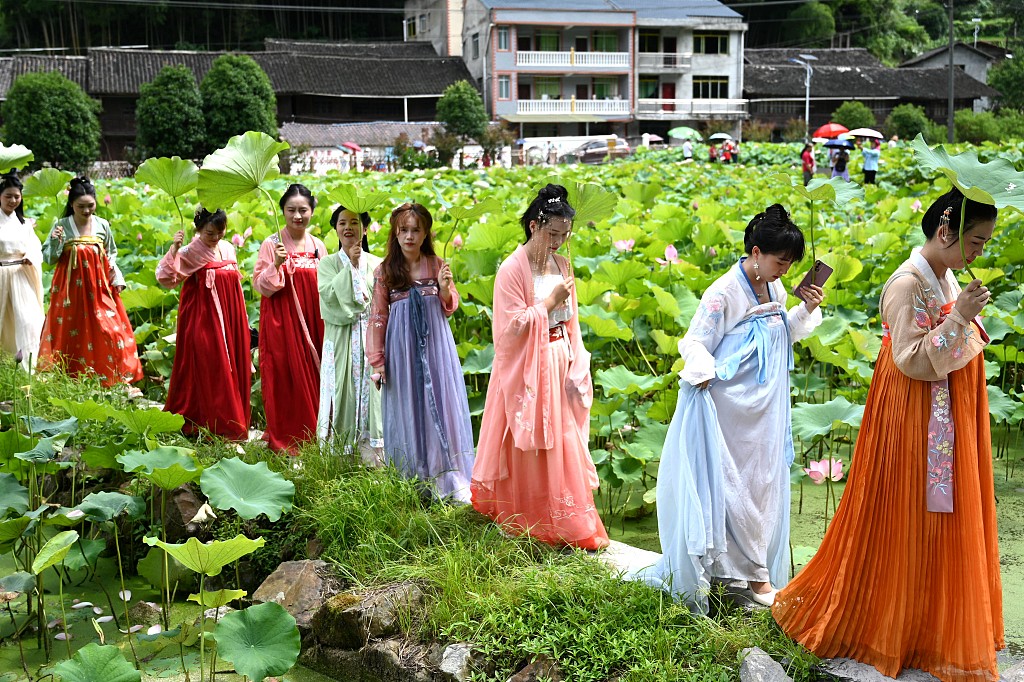
File photo shows women wearing Chinese traditional clothes in summer. /CFP
File photo shows women wearing Chinese traditional clothes in summer. /CFP
Thin, light fabrics were a popular choice during hot and humid weather in ancient times. Even though some thin silks are translucent, they were not regarded as too revealing as Chinese fashions of the time tended to be conservative. To keep cool, the sleeves of summer dresses were kept short and wide.
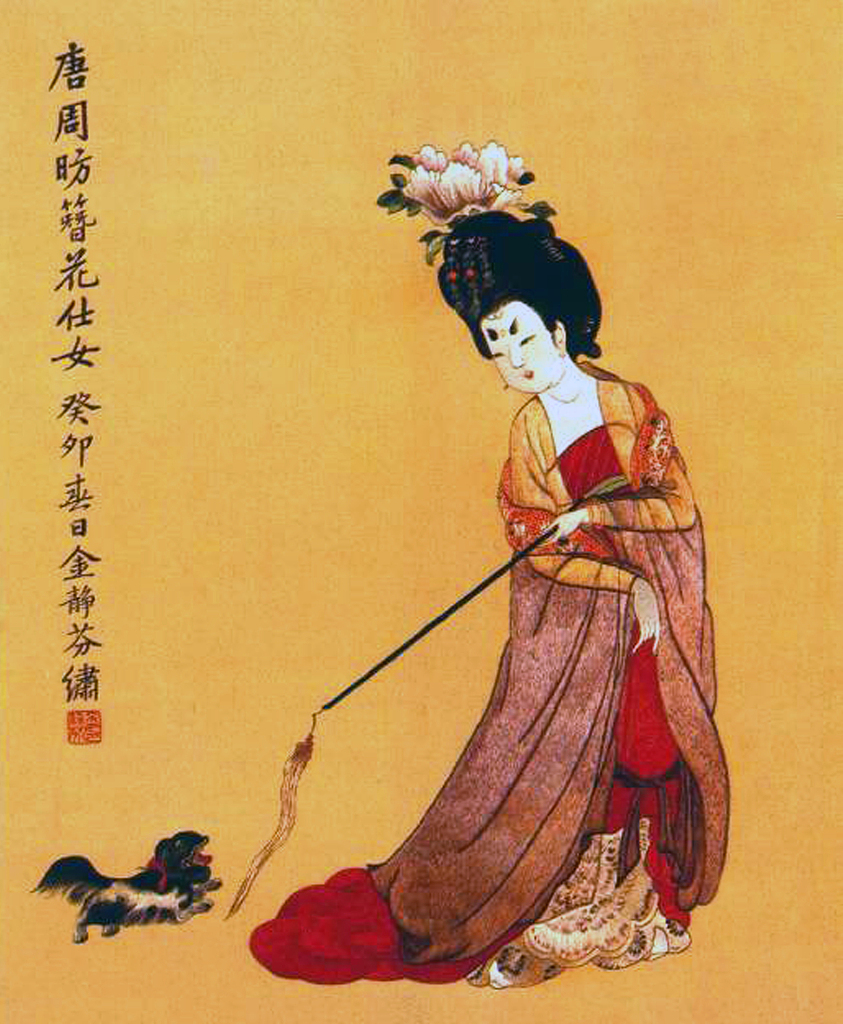
A painting shows a woman wearing a flowered headdress and thin and translucent clothes made of silk to stay cool in the summer. The hand scroll painting was by the Tang Dynasty artist Zhou Fang (730-800). /CFP
A painting shows a woman wearing a flowered headdress and thin and translucent clothes made of silk to stay cool in the summer. The hand scroll painting was by the Tang Dynasty artist Zhou Fang (730-800). /CFP
However, since silk robes were not affordable to most people, common folk in ancient times tended to wear bamboo fabrics and linens, which didn't stick to their skin and helped to prevent sweating.
A fan in hand, and a damp towel on the neck
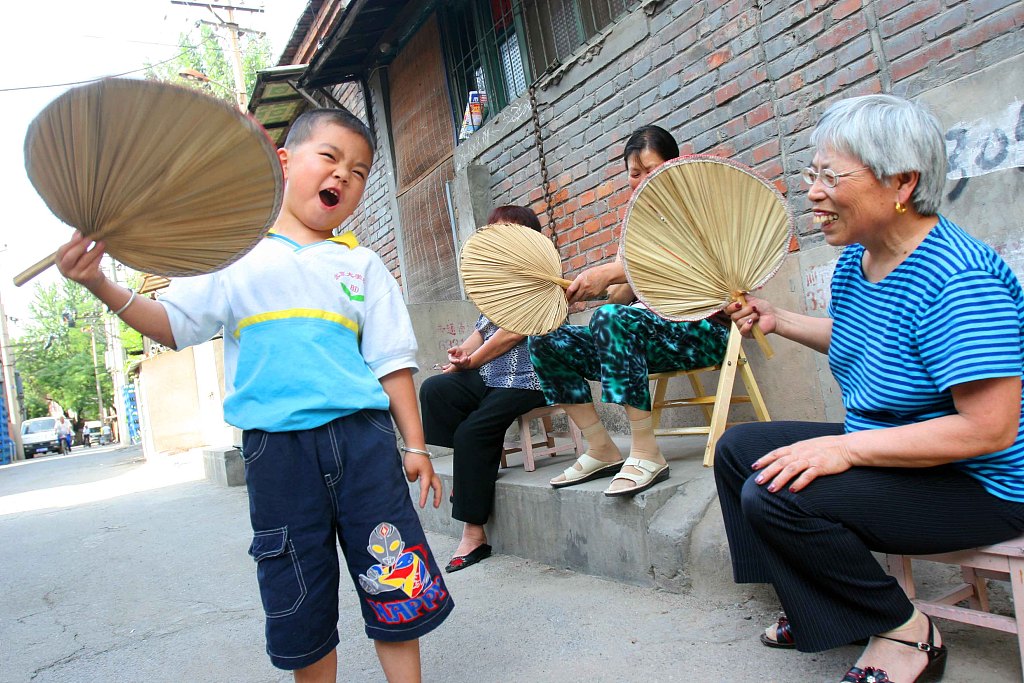
A common sight in China during summertime, senior citizens gather on a street corner to chat with a fan in hand. /CFP
A common sight in China during summertime, senior citizens gather on a street corner to chat with a fan in hand. /CFP
Waving a fan is a good way to gain instant relief from the heat and help your body cool down. The action of the fan moving cooler air across the body helps the sweat to evaporate. If you happen to have a damp towel on your neck, the evaporating effect increases the breeze from the fan. This method is still top of the list for many senior citizens in China as they think it is the most natural and comfortable way to cool down.
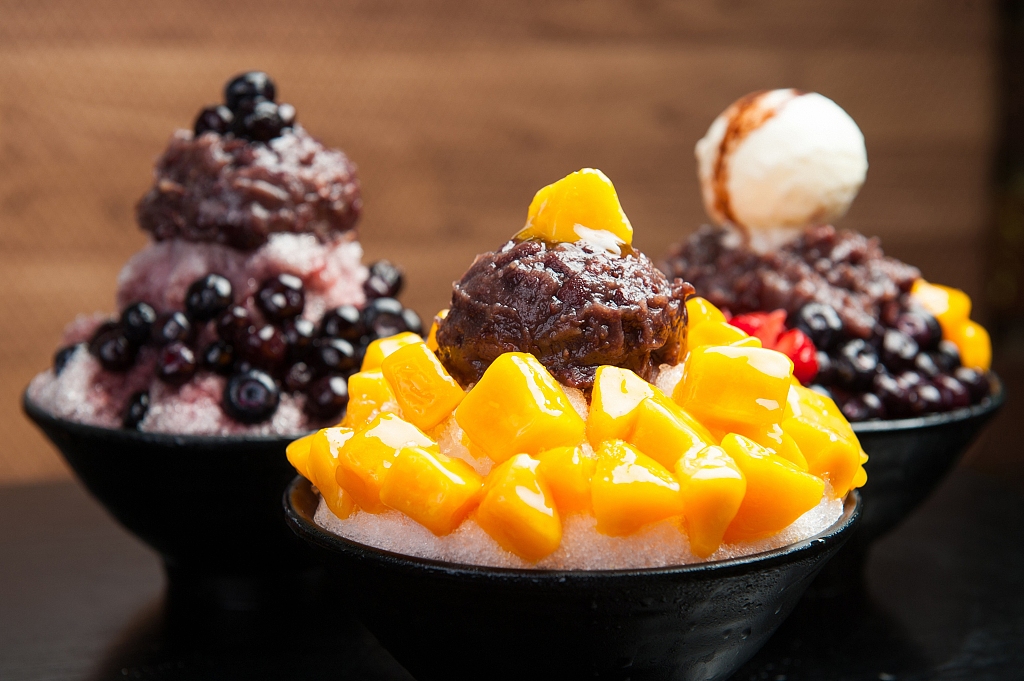
A file photo of some frozen treats. /CFP
A file photo of some frozen treats. /CFP
Ice cream and iced beverages were luxuries and were exclusively consumed by the imperial court dating back to the Zhou Dynasty (1046-256 BC).
Blocks of ice from rivers were harvested and transported to an underground ice warehouse. The exclusivity was lifted in the Tang Dynasty (618-907) when the operation became commercialized with the later discovery of saltpeter. Since then, the production of man-made ice even became possible during the summer months.
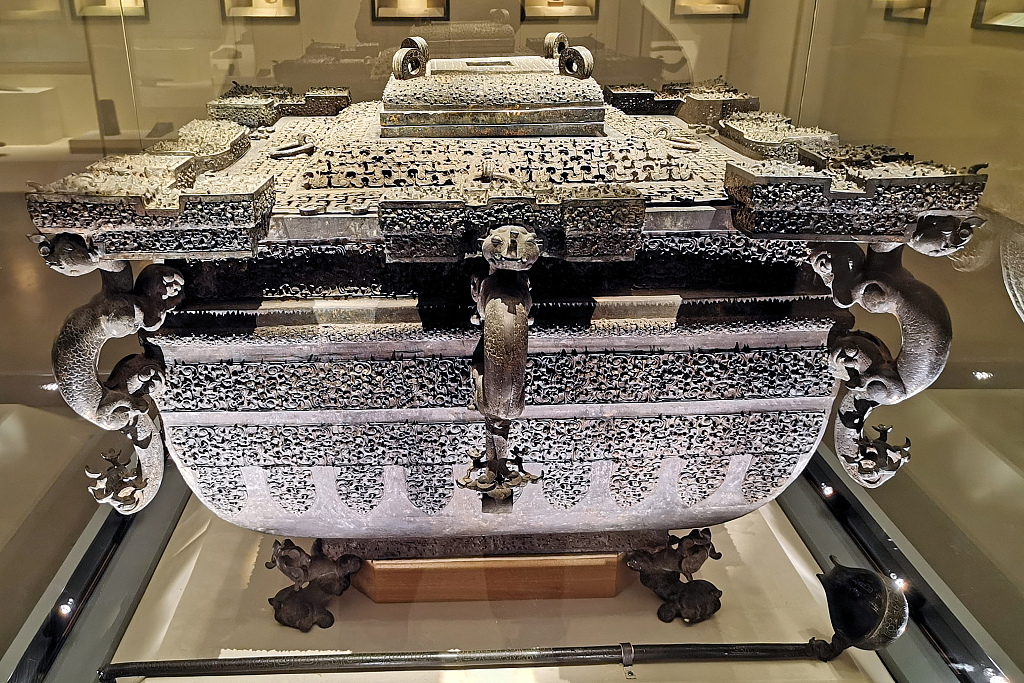
A file photo shows a copper ice container from the Warring States Period (475–221 BC). Ice was kept in containers like these for imperial use. /CFP
A file photo shows a copper ice container from the Warring States Period (475–221 BC). Ice was kept in containers like these for imperial use. /CFP
Historical records show that cold drinks and icy treats were also plentiful during the Song Dynasty (960 - 1279), such as cold wine and fruit juice.
During the Yuan Dynasty (1271-1368) in China, milk was added to cold treats, creating the world's first prototype for ice cream. During the 13th century, Italian traveler Marco Polo enjoyed the treat and brought the technique of making ice cream back to the West.
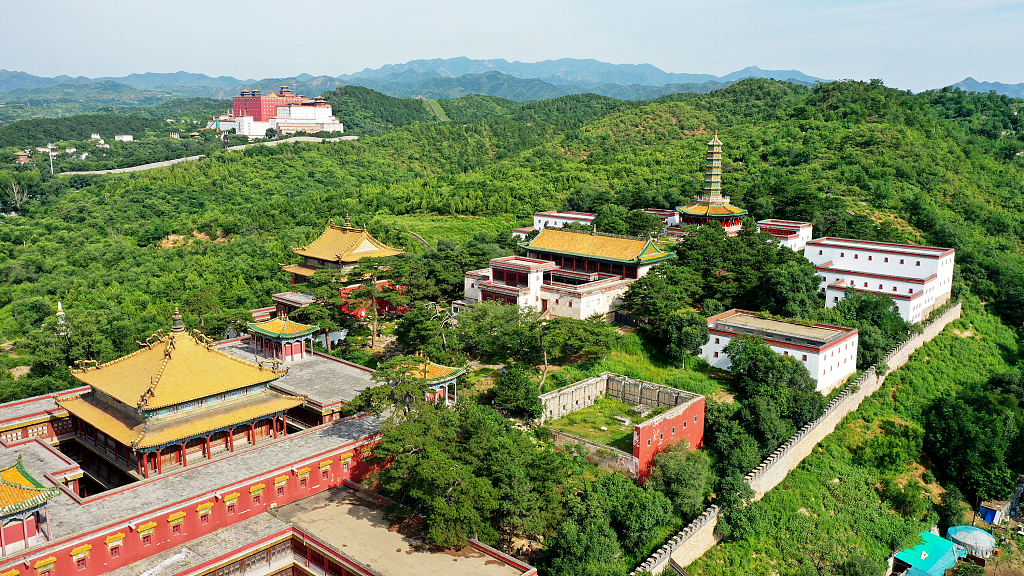
Located northeast of Beijing in Hebei Province, Chengde is known for its imperial palaces. The Chengde Imperial Mountain Resort served as a summer retreat for the Qing imperial family – not only to escape Beijing’s blistering heat but to handle political mandates over the summer months. /CFP
Located northeast of Beijing in Hebei Province, Chengde is known for its imperial palaces. The Chengde Imperial Mountain Resort served as a summer retreat for the Qing imperial family – not only to escape Beijing’s blistering heat but to handle political mandates over the summer months. /CFP
An architectural complex in Chengde City, Hebei Province might also be one of the most famous buildings known for its cooling design features. Listed in 1994 as a UNESCO World Heritage site, Chengde Imperial Mountain Resort consists of palaces, temples and the largest royal garden in China. It served as a summer retreat for the Qing imperial family – not only to escape Beijing’s blistering heat but to handle political mandates over the summer months.
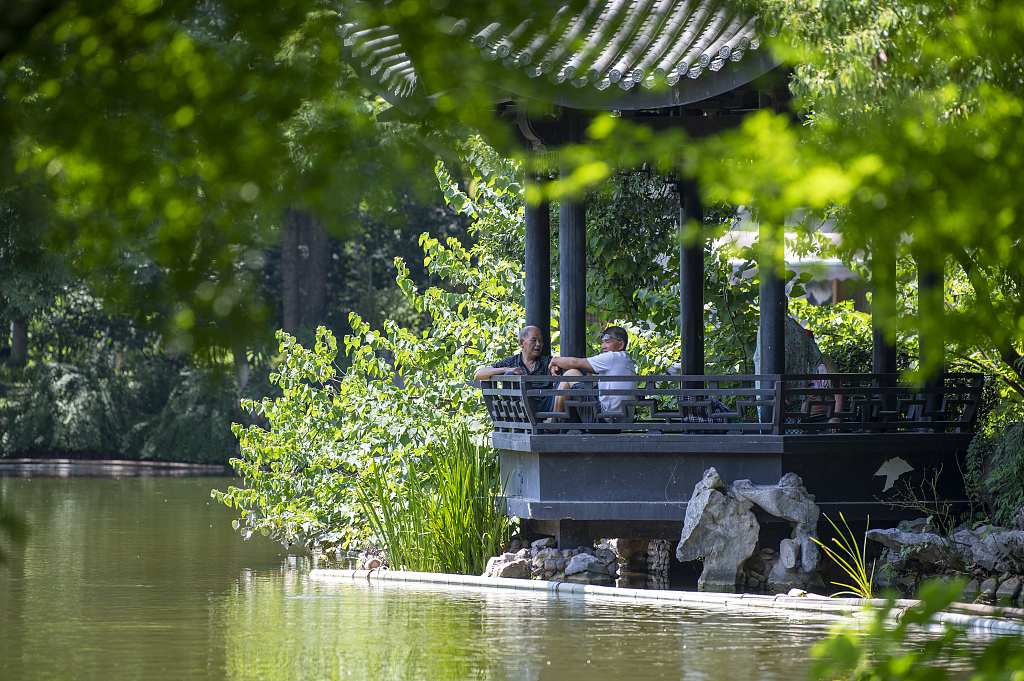
Two senior citizens rest in a pavilion near the lakeside in Jinhua City, Zhejiang Province, June 28, 2023. /CFP
Two senior citizens rest in a pavilion near the lakeside in Jinhua City, Zhejiang Province, June 28, 2023. /CFP
For common folks, living quarters were often built around artificial lakes and reservoirs in ancient times. Trees, flowers and other plants were added to the area to increase the moisture content in the air and provide shade. It’s easy to find many pavilions built near rivers or on the lakeside where people enjoy taking rests.